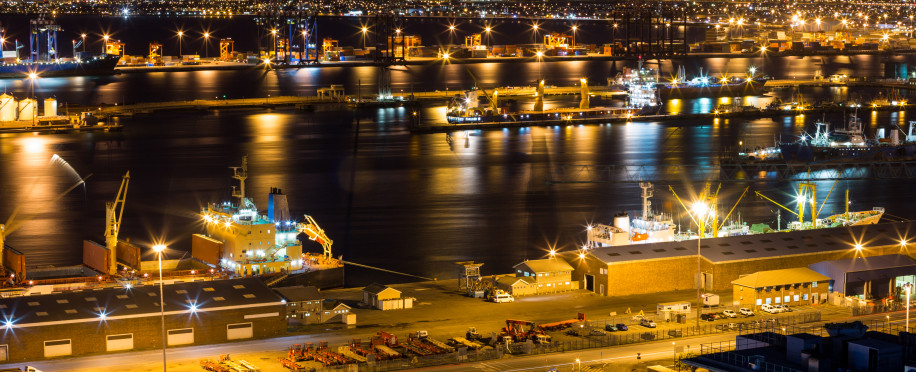Copyright © 2026 lmitac.com All Rights Reserved. Contact - Terms and Conditions - Privacy Policy - Quality Policy - Become an instructor - Vacancies - Sitemap
London Maritime Academy is a trade name for London Premier Groupversion: 2.9.0
London Maritime Academy is a trade name for London Premier Group

Posted on : 6/3/2024, 6:44:21 PM
Last Update : 6/3/2024, 6:44:21 PM
The maritime shipping industry provides cargo and supply for many small and big industries, thus, the impact of port congestion leads to way more than higher DWELL time or ships waiting at sea to enter the port.
Moreover, the port congestion status impacts the workers at the port not only the vessel owners and their cargo, therefore, there are always global efforts to improve the expected post congestion and lower the delays in trade time.
In this article, we are going to share with you great information about port congestion, its causes, port congestion disruption impacts, and how you can relieve port congestion.
Port congestion is the used term to describe the situation where ships arrive at a port and will have to spend high DWELL time waiting to be able to load or unload cargo or container.
Moreover, congestion of ports could happen due to many reasons, including overcrowded docks, lack of storage space, old port infrastructure, or inefficient port operations. And by default, congested ports lead to time delays, increased shipping costs, and disrupted supply chains.
Thus, attending shipping logistics training courses online is the best way to help you know how to improve the infrastructure and communication methods to boost port congestion and container handling.
There are many port shortages and causes of delay in shipments whether in cargo or container handling, however, to be more detailed we are going to share with you the most popular port congestion causes:
Outdated ports and terminals cannot efficiently handle modern container sizes and the increasing pressure of cargo volumes which leads to time delays. Thus, continuous spending on port and terminal infrastructure updates is crucial for keeping up with growing maritime supply chain demands.
When storage areas at ports, including the inventory space, reach their maximum capacity, then the port will be unable to continue storing the arrival cargo and containers leading to major shipping delays and huge waiting times for vessels and carriers outside of the terminals.
However, this could be solved by expanding current stores and storage solutions at ports.
Malfunctions or insufficient maintenance of port machinery, including cranes, forklifts, and other port machines will for sure lead to operational delays and impact the supply chain leading to port congestion.
Thus, running regular maintenance processes is necessary to avoid breakdowns.
At some ports, there are long consumer procedures and terms, that could take weeks, to be able to get loaded container or cargo clearance causing delays at port storage and vessel movement. Therefore, planning for more efficient documentation for customs processes through automation and professional staffing can result in time reduction.
At international ports, they could face a huge flow volume, more than average rates of ships arriving at the same time leading to disruptions in these ports capacities. Which requires better scheduling, port management, and increasing berth space.

All the insight into port congestion clarifies that it has negative and direct impacts on the efficiency of cargo and container handling:
Port congestion causes higher operational costs for any shipping business due to longer wait times and higher fuel consumption while waiting. And sadly, all these additional expenses to the supply chains will be passed on to customers, raising the overall prices of shipping and final products.
Global port congestion causes significant delays in the loading and unloading of cargo and containers and affects the final delivery schedules and days. Which impacts the entire supply chain, causing late deliveries and unhappy customers.
Many shipping businesses that depend on timely shipments and transportation face revenue losses and other issues when goods are delayed due to port congestion. Especially when talking about fresh items shipment that can spoil.
Delays at ports caused by congestion can lead to shortages of required supplies, leading to delays affecting manufacturers, retailers, and consumers. This can cause potential production pauses in different industries which in one way or another will increase the prices of goods.
If the port officials are aiming to relieve and effectively solve the port congestion, then several strategies and practices should be involved:
Digitalising scheduling and communication systems to ensure a more even distribution of vessel arrivals and departures.
Enhancing port infrastructure by expanding the spot of docks and storage facilities, to increase capacity.
Investing in upcoming technology that can speed up port operations like automated cargo handling and real-time tracking systems.
Improving coordination and collaboration among shipping companies, port authorities, and logistics providers to streamline processes and ensure a smoother cargo movement.
Port congestion is a big problem impacting the whole global supply chain, especially when these conditions are reaching international ports.
Thus, working to solve the port congestion problem with real-time insights, updated infrastructure and systems, and well-trained workers is vital for all ports.